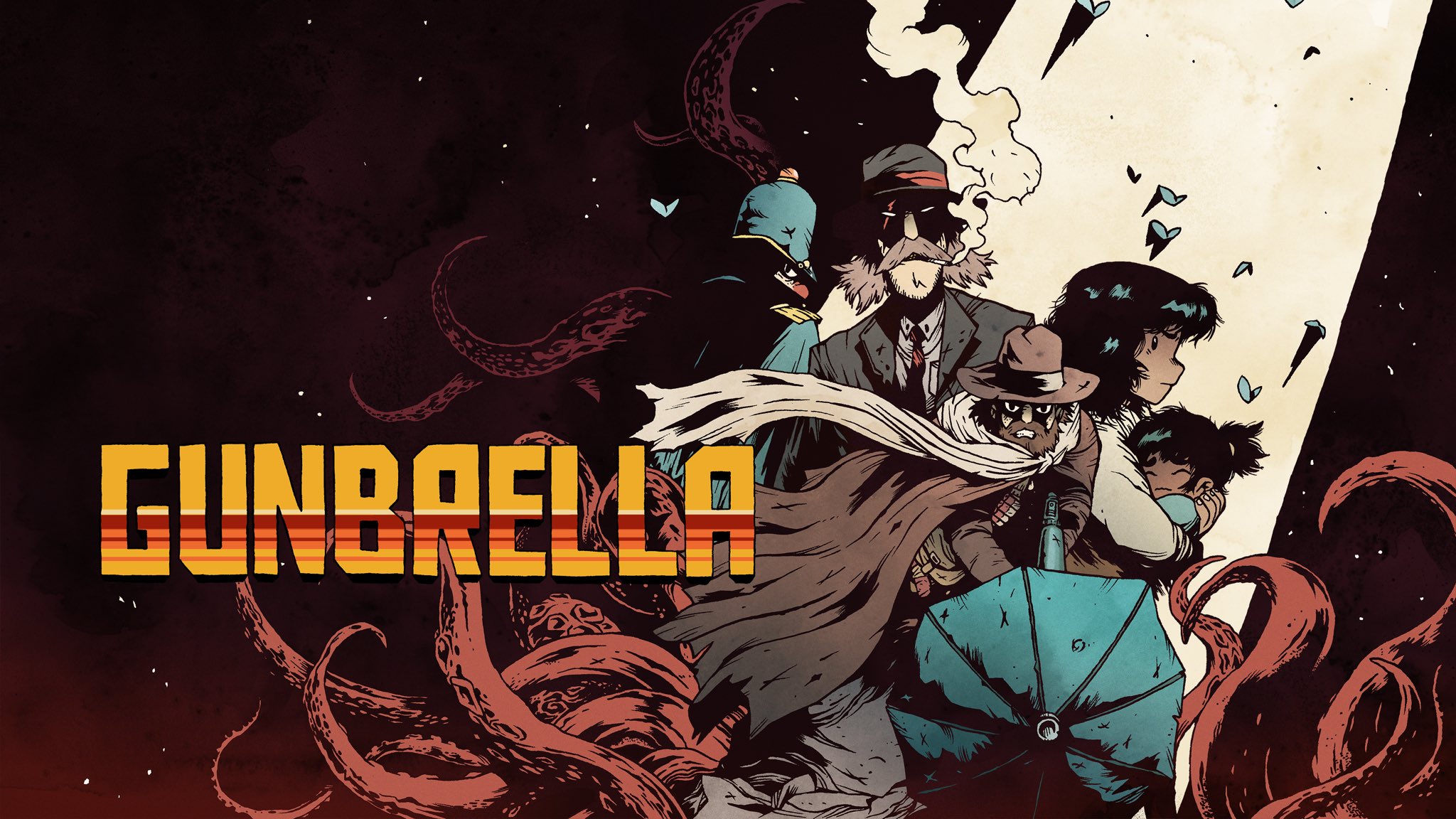
Coming up with a cool and original weapon can be tricky. Sometimes, you end up with something that looks cool, like a gunblade, but when you think about it, you realize how stupid it actually is. Indie games always seem to be trying to come up with odd and quirky weapons for their games, such as shovels, soap, or even a motor-mouthed alien.
Sometimes, the best ideas are the simplest. Pretending an umbrella is a rifle, it suddenly becomes so clear that you wonder why nobody has ever done it before. Once you have your quirky weapon concept, there needs to be a game built around it. What kind of game would it be, and how would it play? Gunbrella takes this playful premise and demonstrates to gamers precisely what it can become.
Gunbrella
Developer: Doinksoft
Publisher: Devolver Digital
Platforms: Windows PC, Nintendo Switch (reviewed)
Release Date: September 13, 2023
Price: $14.99 USD
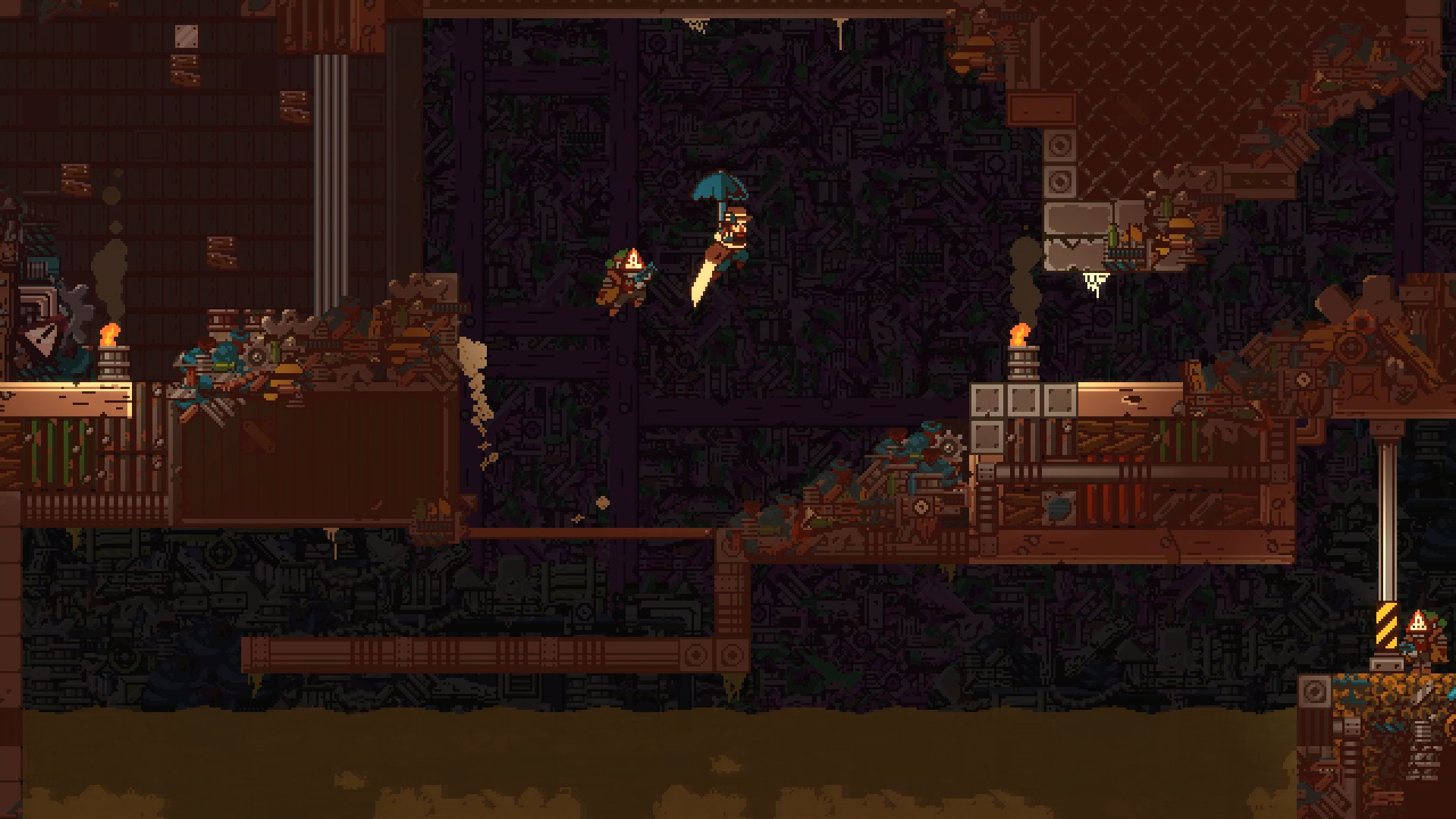
It’s a gun. It’s an umbrella. You put them both together and you get a Gunbrella. It functions almost exactly like you’d think it would.
Taking cues from Danny DeVito when he played the Penguin, a gunbrella is a parasol that fires like a shotgun, or machinegun bursts. It can deflect projectiles and ineffectually block threats. Cheeky gamers might even use it like a pogo stick like Scrooge McDuck. Most importantly, it can glide and give you a nice boost-dash.
Gunbrella‘s tale unfolds in a unique blend of steampunk and trash punk. It revolves around an unnamed hero driven by the desire for vengeance after the brutal murder of their loved ones. The sole clue: a mysterious gunbrella weapon left at the scene, which becomes the instrument of justice in his quest for retribution.
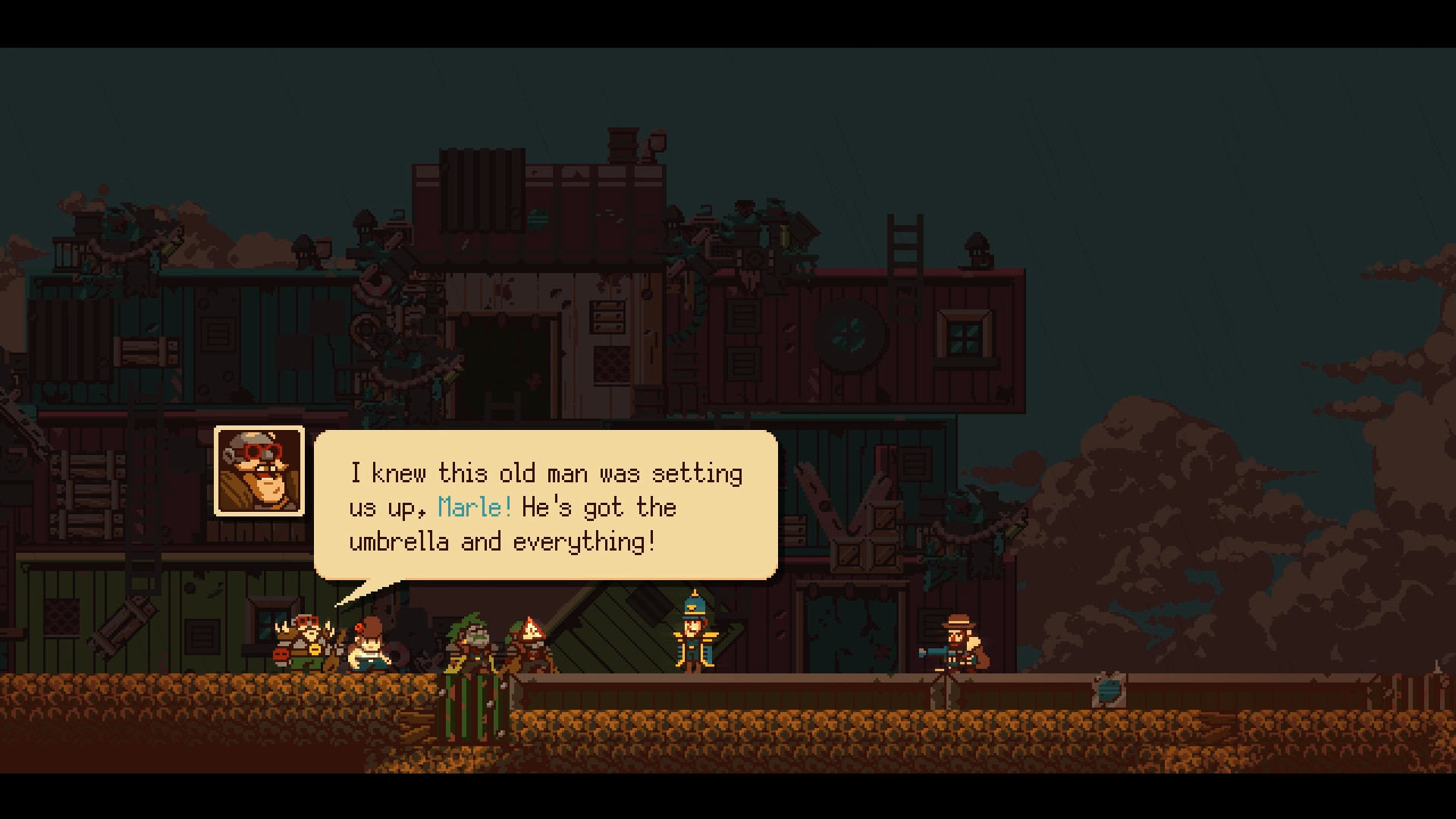
The Gunbrella emerges as a crucial lead since it serves as the standard sidearm for the police force. The fast-paced plot expands to encompass a lethal cult capable of summoning immortal wraiths. Depending on the player’s decisions, alliances can be forged with the local populace, who might assist in defeating a kaiju-sized rat.
The story is more developed than it has any right to be. Significant effort has gone into fleshing out the world and its characters. Even minor NPCs are given unique face portraits, and their distinctive personalities shine through in the brief lines of text.
The player’s role in the story offers an unexpectedly wide range of choices, despite it being effectively an action platformer with some adventure game elements. While there are a few mandatory events that force gamers to make decisions resulting in various story outcomes, the allegiances mentioned earlier can only be formed if players actively choose to do so.
In a game like this, it’s not essential, but it enhances replay value and adds challenge because some choices have consequences that can increase the game’s difficulty. The core gameplay resembles a run-and-gun, twin-stick action platformer with a stronger focus on physics and momentum.
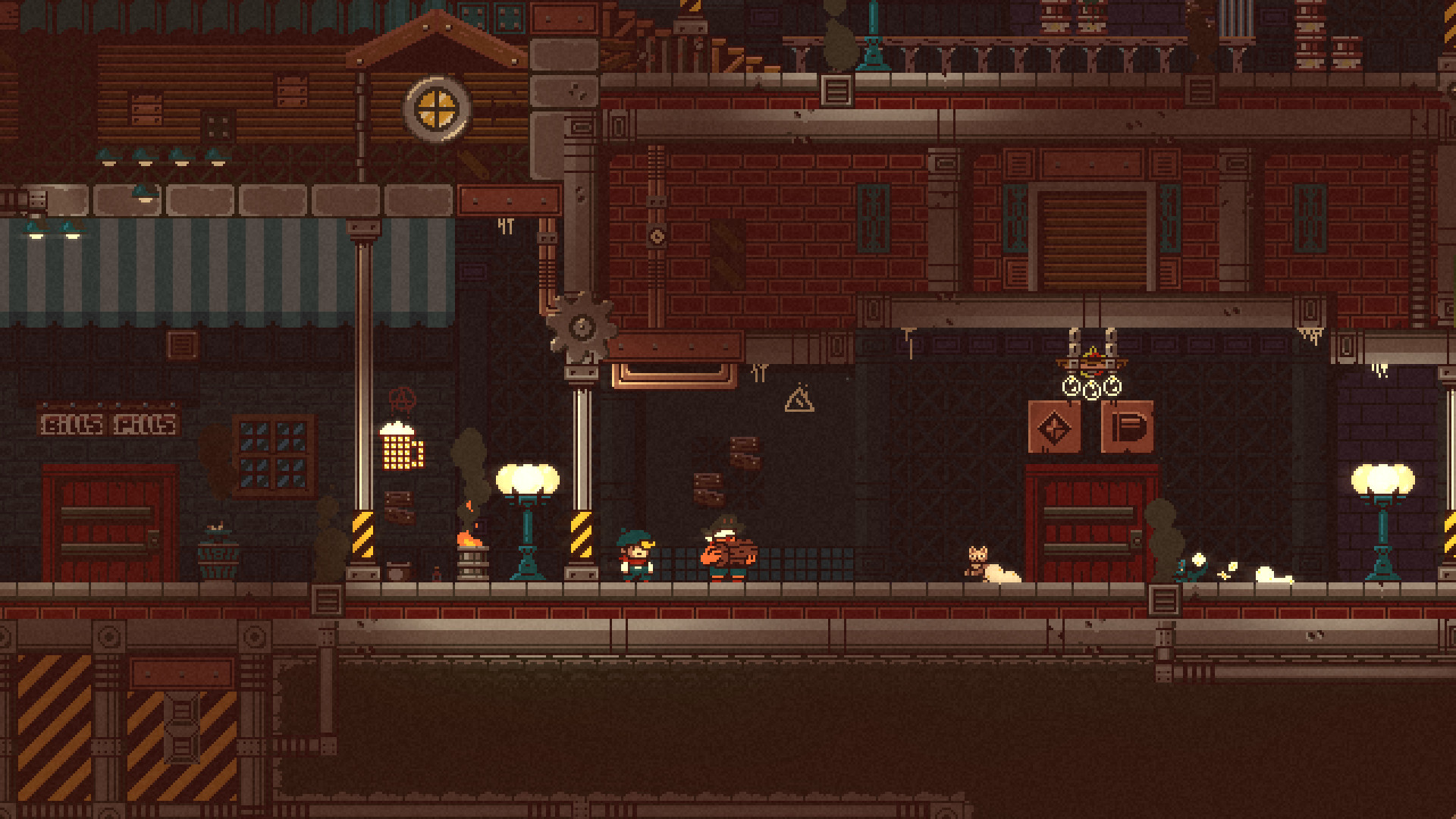
Gunbrella consistently navigates a delicate equilibrium, skillfully juggling the elements of methodical adventure game traditions and the exhilarating intensity of all-out gunplay. Throughout the game, players frequently find themselves transitioning between these contrasting experiences.
At times, they can leisurely explore the intricately crafted world, engaging in conversations with NPCs who may request assistance or information. These interactions, although occasionally optional, often hold the key to unraveling the game’s narrative or uncovering hidden secrets.
The game’s deceptive tranquility is frequently disrupted by sudden bursts of action. When necessity dictates, players may find themselves thrust into intense shootouts, challenging their reflexes and marksmanship skills.
Gunbrella is dense with heart-pounding gauntlets of platforming challenges, demanding precise timing, and a keen sense of spatial awareness. This dynamic interplay between moments of calm exploration and high-octane action not only keeps players engaged but also underscores Gunbrella‘s unique blend of genres, ensuring that every moment in the game is both unpredictable and exhilarating.
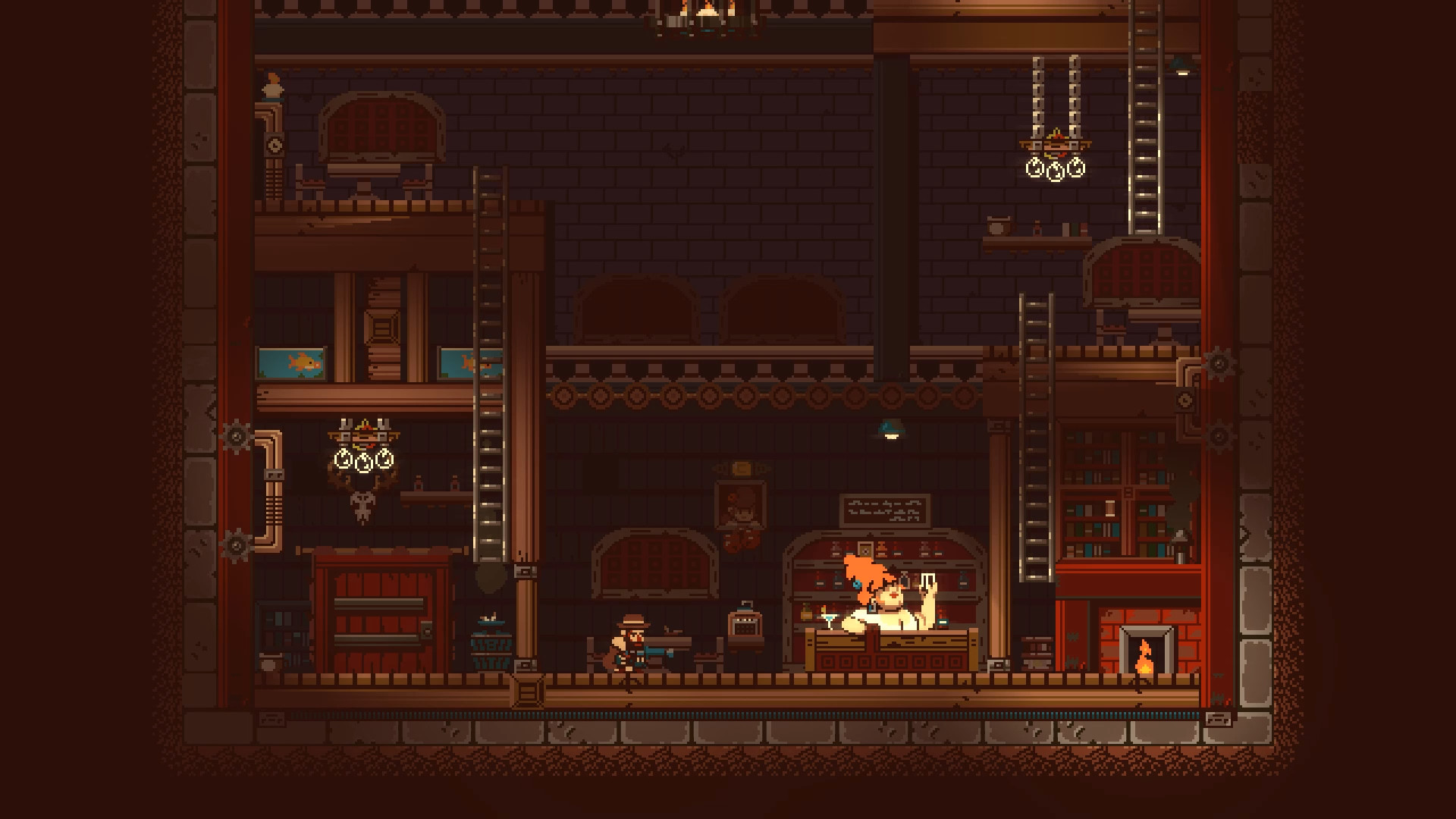
The protagonist in Gunbrella exhibits an impressive level of control and finesse, making each movement feel deliberate and precise. Much of this dexterity stems from the unique capabilities granted by the Gunbrella itself. With this remarkable weapon at hand, the protagonist can effortlessly execute a repertoire of acrobatic maneuvers that enhance both mobility and combat prowess.
One of the standout abilities is the ability to perform Mega Man X-style wall jumps. This agile move allows the character to scale vertical surfaces with ease, opening up new avenues for exploration and strategy. Whether it’s reaching otherwise inaccessible areas or swiftly evading enemy attacks, wall jumping adds a layer of depth to the gameplay.
Aerial mobility not only provides strategic advantages during platforming challenges but also changes the dynamic of combat encounters. Soaring above adversaries, players can reign hellish shotgun blasts and safely land with the grace of Mary Poppins.
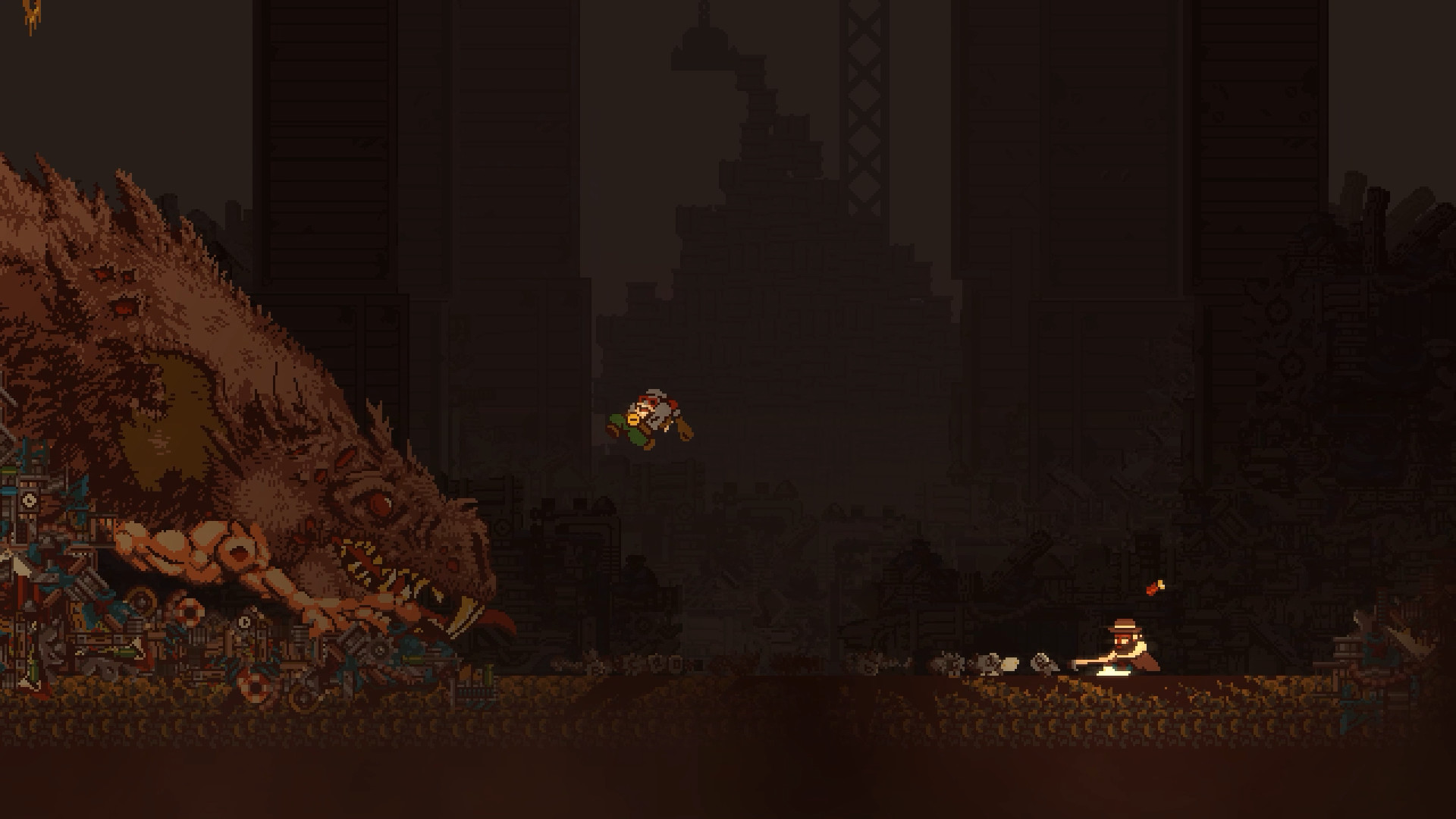
One of the most rewarding aspects of Gunbrella‘s gameplay is the skill ceiling it presents. Mastery of the character’s abilities is not just about executing them but also about reading and reacting to the enemy’s movements.
Players must pay close attention to enemy tells, telegraphed signs that foreshadow their impending attacks. When executed with precision, the protagonist can deflect these incoming assaults, turning them into devastating counterattacks.
The tactile satisfaction of deflecting an attack and witnessing the enemy suffer the consequences is enhanced by the game’s rich audio and visual feedback, creating an intensely immersive experience that leaves players craving more.
However, it’s not perfect. Bosses often have excessively high HP, and their attack patterns can become too predictable, leading to tedious battles. This issue is exacerbated by the busy pixel art backgrounds, which can make it challenging to track the small characters amidst the flying debris and shrapnel from the explosive visuals.
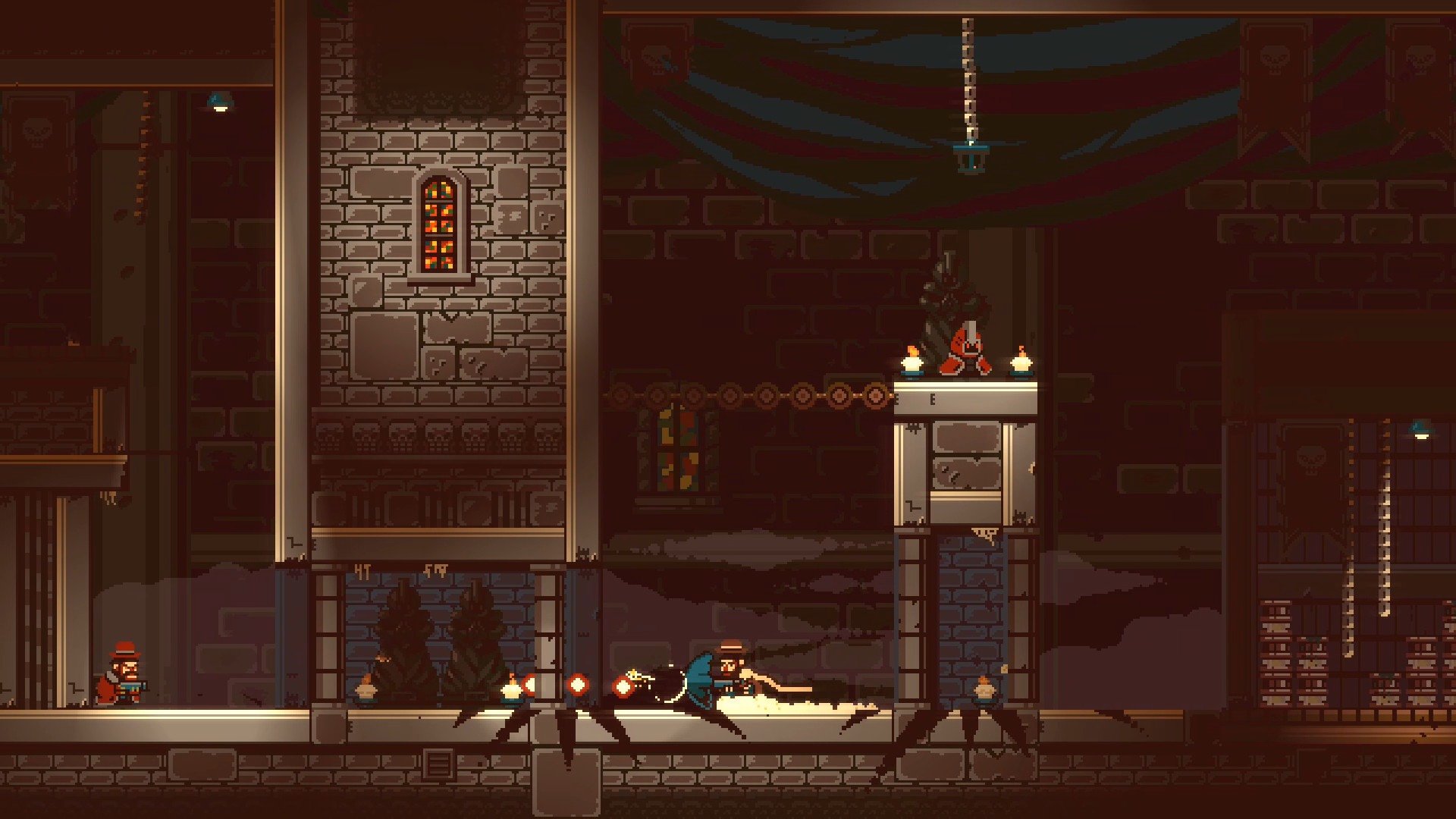
The pixel art in Gunbrella possesses a charmingly chunky aesthetic that exudes a nostalgic appeal. In particular, the backgrounds are meticulously crafted, showcasing a superb balance of colors and intricate details. It’s easy to appreciate the attention to detail in the backdrop art, which often brings the game world to life in a vivid and immersive manner.
The same level of finesse does not extend to the character design. Characters take on a more stubby and less refined appearance. Unlike the backgrounds, they lack the sharpness of defined silhouettes or the expressiveness that makes a character memorable.
The protagonist, in particular, suffers from a design that seems to lack personality or any sense of coolness. Instead of embodying the rugged noir archetype one might expect, he resembles a frumpy rabbi, an unexpected departure from the typical noir aesthetic. Many characters in the game seem to sport bulbous red noses, a dated stylistic choice that was common in indie games a decade ago.
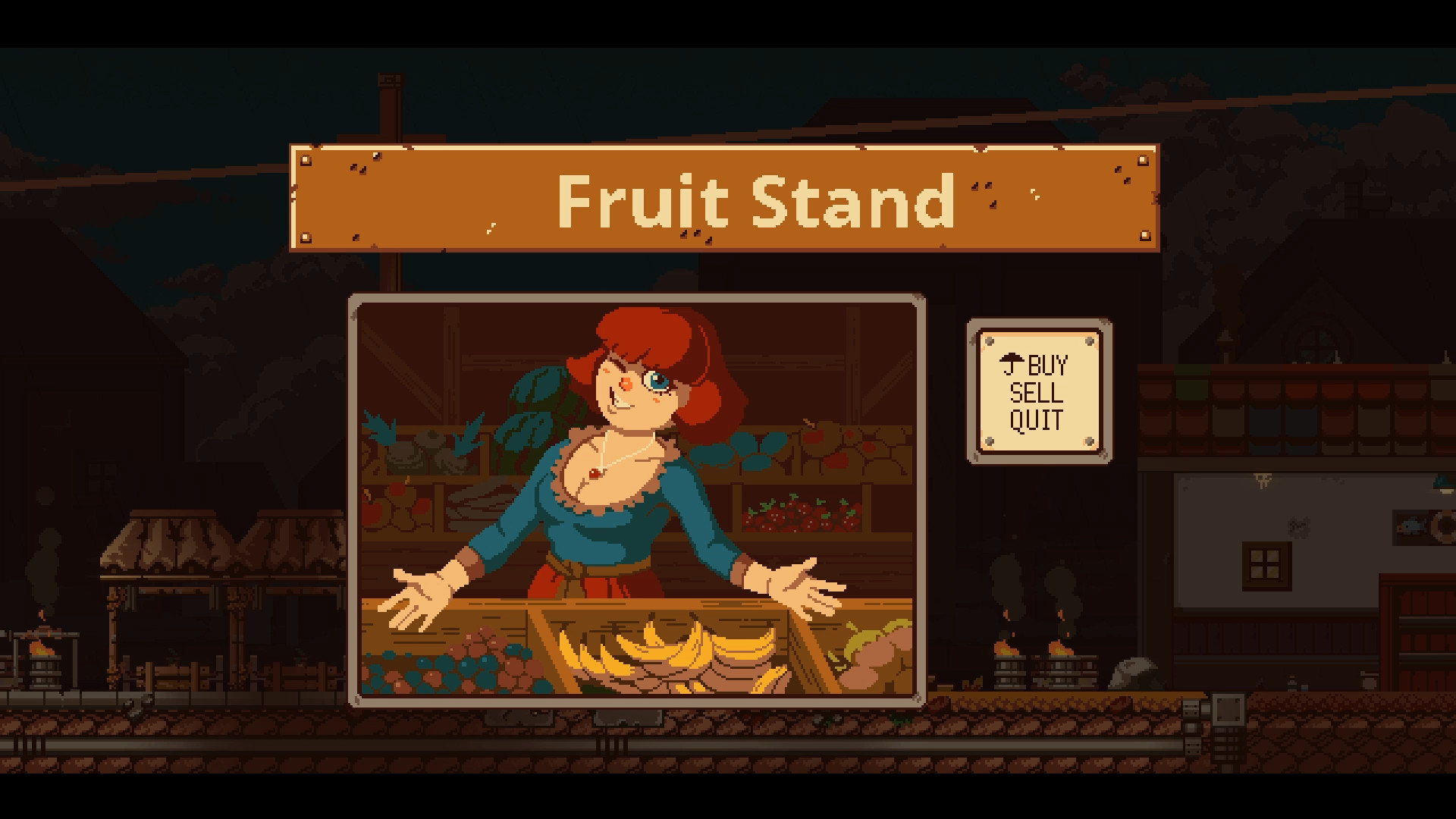
Gunbrella is a worthwhile action-adventure game that is only held back by its utterly lame character designs and tedious boss fights. Being able to make some choices during the course of the journey adds some replay value and the Gunbrella weapon is varied and fun to use.
It’s unfortunate that the other ammo types are either too rare or too costly to be dependable. The machine gun, while powerful and wildly inaccuracy, makes it a potentially skill-based weapon. However, obtaining enough ammo for consistent practice proves to be a daunting challenge.
Gunbrella represents a commendable initial attempt at the concept. It maintains a tight pace without overstaying its welcome. With some refinement and improved character art, a sequel or successor could truly excel.
Gunbrella was reviewed on Nintendo Switch using a code provided by Devolver Digital. Additional information about Niche Gamer’s review/ethics policy can be found here. Gunbrella is now available for Windows PC (via Steam) and Nintendo Switch.